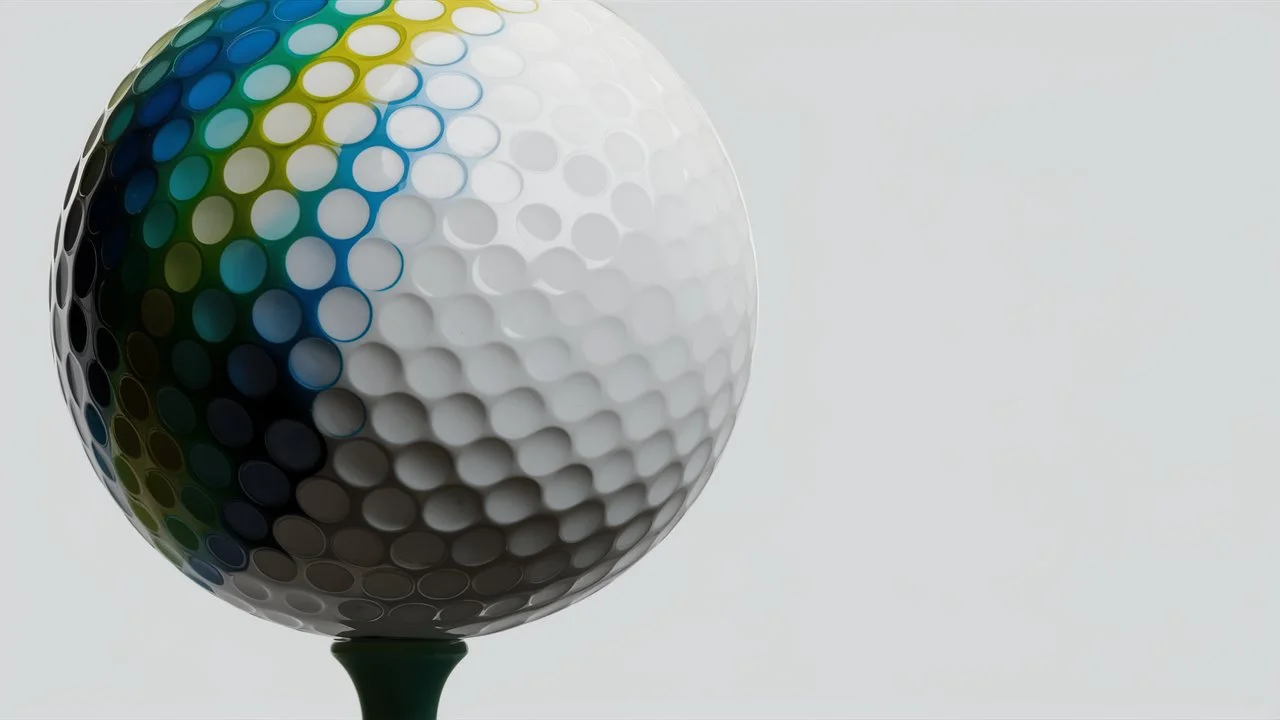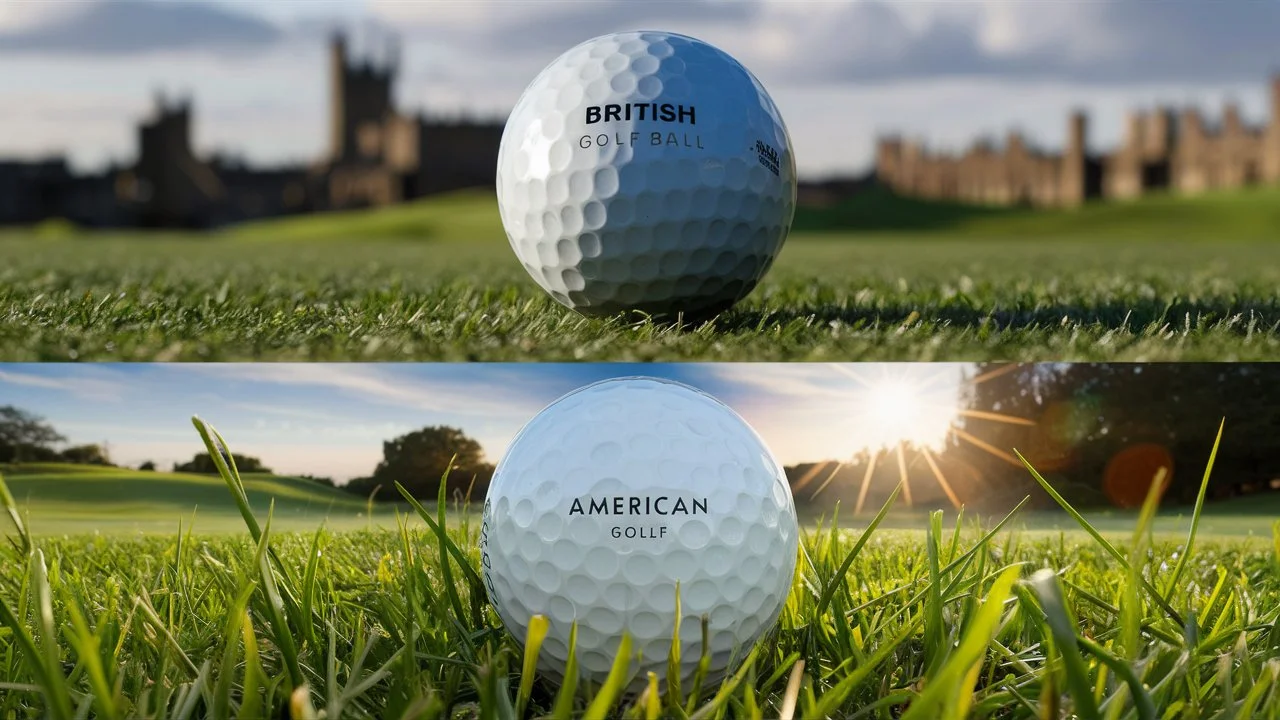Have you ever wondered about the size of a golf ball? The diameter of a golf ball is an important detail in the game of golf. It might seem like a small and simple thing but the size of a golf ball is actually very specific.
Understanding the diameter of a golf ball can help you appreciate why it is designed that way. Let’s take a closer look at this tiny but crucial piece of sports equipment and learn what its diameter is and why it matters in the game of golf.
The diameter of a golf ball is 1.68 inches (42.67 millimeters). This is the standard size for all golf balls used in official games and tournaments.
What is the Diameter of a Golf Ball?
The diameter of a golf ball is the distance across the ball from one side to the other, passing through the center. This measurement is very important in the game of golf.

The Standard Size
All golf balls used in official games and tournaments have a standard size. The diameter of a golf ball is 1.68 inches (42.67 millimeters). This size is used all over the world.
Why Size Matters
The size of a golf ball affects how it flies through the air and how it rolls on the ground. A ball that is too big or too small wouldn’t work well in the game. The standard size ensures that all players use the same type of ball, making the game fair.
Golf Ball Size in Different Countries
| Country | Standard Golf Ball Size (inches) | Standard Golf Ball Size (millimeters) |
|---|---|---|
| United States | 1.68 inches | 42.67 millimeters |
| United Kingdom | 1.68 inches | 42.67 millimeters |
| Australia | 1.68 inches | 42.67 millimeters |
| Japan | 1.68 inches | 42.67 millimeters |
| Canada | 1.68 inches | 42.67 millimeters |
Note:
The standard size of a golf ball is the same worldwide. All official golf balls used in tournaments and games have a diameter of 1.68 inches (42.67 millimeters), ensuring consistency and fairness in the game globally.
Related reading: Best Golf Balls for Seniors [Low Compression balls]
The History of Golf Ball Size (British Ball to American Ball)
Golf originated in Scotland in the 15th century, and the early golf balls were quite different from today’s standard. Initially, golf balls were made from wood and later, they were crafted from leather stuffed with feathers known as “featheries.”
The Gutta-Percha Ball
In the mid-19th century, the “gutta-percha” ball was introduced. Made from the dried sap of the Malaysian sapodilla tree, these balls were more durable and less expensive to produce than featheries. The gutta-percha ball became the standard in both Britain and the United States.
British Ball vs. American Ball
In the early 20th century, two different standard sizes of golf balls emerged: the British ball and the American ball.
- British Ball: The British ball had a diameter of 1.62 inches and was preferred in the United Kingdom and Commonwealth countries. It was slightly smaller and lighter, which some players believed allowed it to travel farther.
- American Ball: The American ball had a diameter of 1.68 inches and was used primarily in the United States. This ball was slightly larger and heavier, providing more stability in flight and better control.
Unification of Standards
By the 1970s, there was a push to unify the standards for golf balls. The Royal and Ancient Golf Club of St Andrews (R&A), which governed the rules of golf outside the United States and Mexico, and the United States Golf Association (USGA), the governing body in the U.S. and Mexico, agreed on a single standard.
- Modern Standard: In 1974, the R&A and USGA agreed to adopt the American ball’s size as the global standard. Thus, the diameter of all official golf balls became 1.68 inches (42.67 millimeters).

Differences Between the British and American Golf Balls
Size and Weight
- British Golf Ball: The British ball had a diameter of 1.62 inches and weighed 1.62 ounces. This smaller size and lighter weight made it more aerodynamic and potentially allowed it to travel farther, especially in windy conditions.
- American Golf Ball: The American ball had a diameter of 1.68 inches and weighed 1.62 ounces. Although it was slightly larger, the weight remained the same as the British ball. The increased size provided more stability in flight and better control, particularly on shorter shots.
Aerodynamics
- British Golf Ball: The smaller size of the British ball reduced air resistance, which could result in longer drives. However, this also made it more susceptible to wind and other environmental factors.
- American Golf Ball: The larger diameter of the American ball increased air resistance slightly, which could reduce the overall distance. However, this also made the ball more stable and predictable in flight, offering better control and accuracy.
Usage and Preference
- British Golf Ball: The British ball was predominantly used in the United Kingdom and Commonwealth countries. Players in these regions often preferred the smaller ball for its potential distance advantages.
- American Golf Ball: The American ball was used primarily in the United States. American players preferred the larger ball for its stability and control, which were considered more important than the potential for a few extra yards of distance.
Historical Transition
-
- Historical Context: Up until the 1970s, golfers could choose between the British and American balls based on their preference and the rules of the competitions they played in. This dual standard led to some confusion and inconsistency in the game.
- Unification: In 1974, the Royal and Ancient Golf Club of St Andrews (R&A) and the United States Golf Association (USGA) agreed to unify the standards. The larger American ball’s size of 1.68 inches became the official size for all professional and amateur golf competitions worldwide.
Differences Between Two-Piece, Three-Piece and Multi-Layer Golf Balls
Two-Piece Golf Balls
- Structure:
- Core: Made of a solid, high-energy rubber or synthetic material.
- Cover: Typically made of a durable material like Surlyn.
- Characteristics:
- Distance: Designed for maximum distance. The solid core helps in transferring energy efficiently from the club to the ball.
- Durability: Very durable due to the tough cover, making it ideal for casual players who might hit the ball off-center frequently.
- Spin: Produces less spin, which can help reduce slices and hooks, making it easier to hit straight shots.
- Ideal For:
- Beginners and high-handicap players who prioritize distance and durability over control and feel.
Three-Piece Golf Balls
- Structure:
- Core: Can be solid or liquid-filled.
- Inner Layer: Made of rubber or synthetic material, providing additional control and spin.
- Cover: Typically made of softer materials like urethane.
- Characteristics:
- Control and Spin: Offers better control and more spin than two-piece balls, making it easier to shape shots and control on the greens.
- Feel: Provides a softer feel, preferred by many skilled players for short game precision.
- Distance: Balances distance with control, though not as long as two-piece balls.
- Ideal For:
- Intermediate and low-handicap players who want a balance of distance, control and feel.
Multi-Layer Golf Balls
- Structure:
- Core: Multi-layered core, often with varying firmness levels to optimize energy transfer.
- Additional Layers: Several layers between the core and the cover, each designed to enhance specific aspects like spin, control, and feel.
- Cover: Made of soft materials like urethane, providing excellent control and feel.
- Characteristics:
- Performance: Offers the highest level of performance, with optimized spin rates for different types of shots (e.g., low spin off the driver, high spin around the greens).
- Feel: Very soft feel, preferred by professionals and skilled players for precise control.
- Customization: Different layers can be engineered to fine-tune specific characteristics, offering a tailored experience for advanced players.
- Ideal For:
- Advanced and professional players who seek the best performance in terms of spin, control, feel and distance.
Conclusion
The diameter of a golf ball is 1.68 inches (42.67 millimeters). This specific size is essential for the game of golf, as it ensures consistency, fairness, and optimal performance for all players. Understanding this detail helps you appreciate the design and the rules of the game. Whether you’re a beginner or a seasoned player, knowing the diameter of a golf ball enhances your knowledge and enjoyment of the sport.






